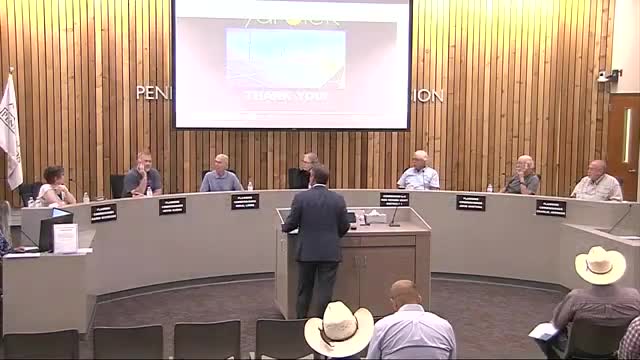Texas solar farm faces crisis after devastating hailstorm
July 22, 2024 | Pennington County, South Dakota

This article was created by AI summarizing key points discussed. AI makes mistakes, so for full details and context, please refer to the video of the full meeting. Please report any errors so we can fix them. Report an error »

In a recent government meeting, discussions centered around the impact of severe weather on solar energy infrastructure, particularly focusing on a significant hailstorm that affected a 4,000-acre solar panel facility in Texas. The conversation highlighted the challenges posed by hail, a common weather phenomenon in the region, and raised concerns about the resilience of solar panels to such extreme conditions.
Officials noted that while Texas does not frequently experience hurricanes or tornadoes, it is prone to large hail, which can cause substantial damage to solar panels. The meeting revealed that solar facilities are often designed with hurricane resilience in mind, as seen in Puerto Rico, where panels were built to withstand winds from category 3 hurricanes. However, the recent hailstorm in Texas raised questions about the adequacy of these designs against hail damage.
Participants discussed the varying resilience of different types of solar panels, with some featuring casings that offer better protection against hail impacts. The meeting also touched on the potential contamination risks associated with broken panels, a concern that emerged from the Texas incident. While specific details about the contamination risks were not fully explored, the implications of damaged panels on both the environment and energy production were acknowledged as critical issues.
Overall, the discussions underscored the need for improved design standards and materials for solar panels to enhance their durability against extreme weather events, ensuring the sustainability and reliability of solar energy as a key component of the energy landscape.
Officials noted that while Texas does not frequently experience hurricanes or tornadoes, it is prone to large hail, which can cause substantial damage to solar panels. The meeting revealed that solar facilities are often designed with hurricane resilience in mind, as seen in Puerto Rico, where panels were built to withstand winds from category 3 hurricanes. However, the recent hailstorm in Texas raised questions about the adequacy of these designs against hail damage.
Participants discussed the varying resilience of different types of solar panels, with some featuring casings that offer better protection against hail impacts. The meeting also touched on the potential contamination risks associated with broken panels, a concern that emerged from the Texas incident. While specific details about the contamination risks were not fully explored, the implications of damaged panels on both the environment and energy production were acknowledged as critical issues.
Overall, the discussions underscored the need for improved design standards and materials for solar panels to enhance their durability against extreme weather events, ensuring the sustainability and reliability of solar energy as a key component of the energy landscape.
View full meeting
This article is based on a recent meeting—watch the full video and explore the complete transcript for deeper insights into the discussion.
View full meeting